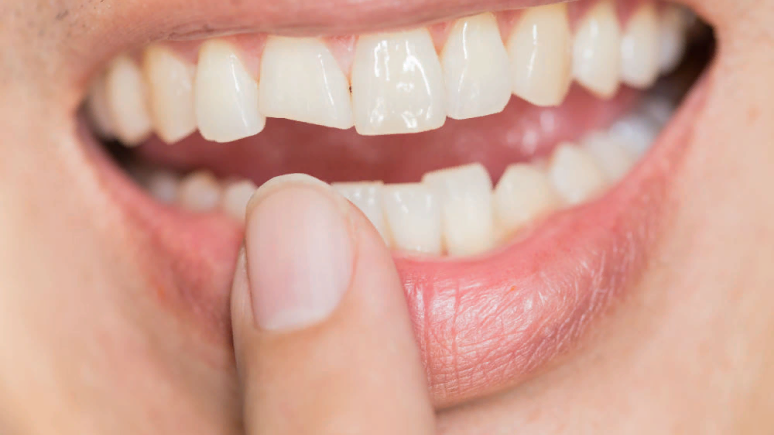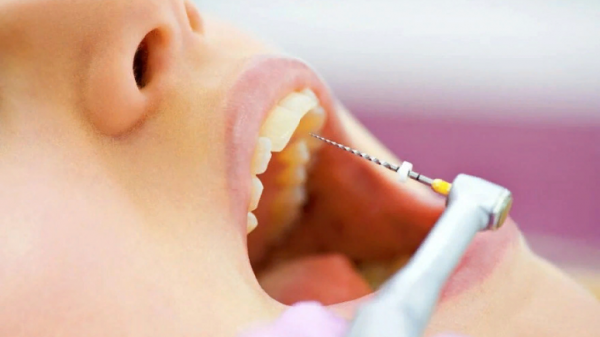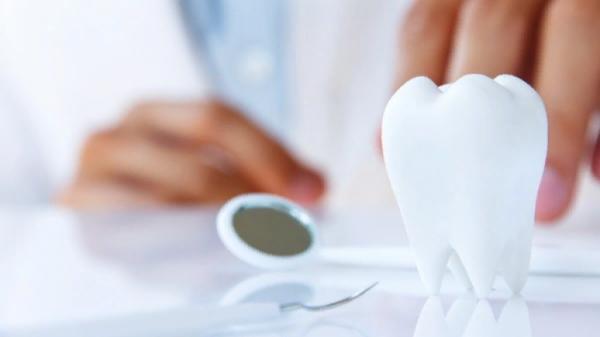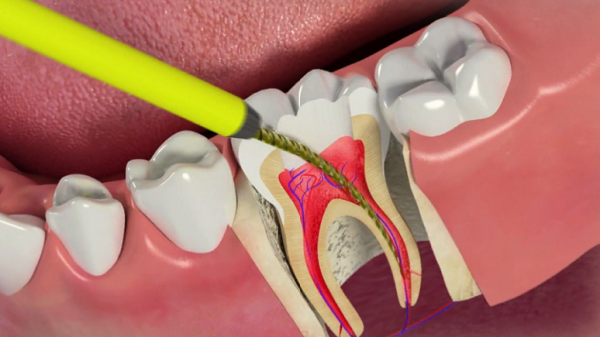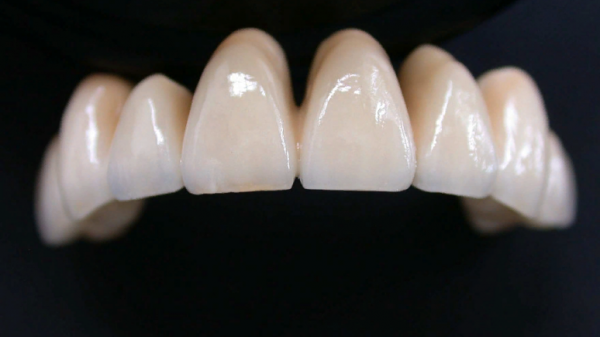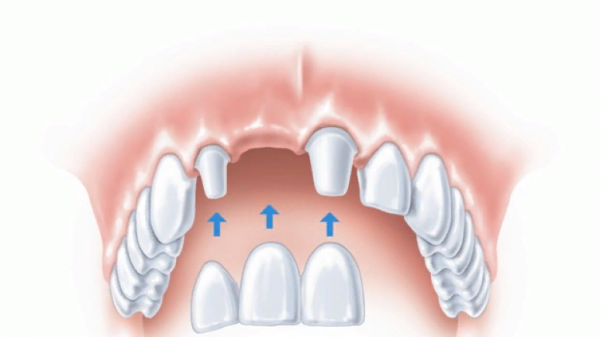Causes of dental chips
To find the right treatment, the dentist needs to determine why the chipped tooth occurred.
What factors cause such damage?
- Domestic injuries;
- Decreased acidity in the oral cavity;
- Remineralization of tooth enamel;
- Malocclusion;
- Pathologies of teeth that have not been cured before;
- Bad habits;
- Hormonal imbalances.
Chips are considered traumatic if the dentition was damaged during an impact or fall. But in everyday life, dental tissues are much more often destroyed due to bad dental habits (biting nails, stationery, etc.) and performing actions for which teeth are not intended at all (opening bottles with teeth, untying knots, etc.).
If you combine very hot and cold dishes when eating, this also contributes to the destruction of enamel. The increased content of carbohydrates in the diet helps to reduce acidity in the oral cavity, alcohol and tobacco also negatively affect the condition of the teeth.
The health of the dentition largely depends on how rationally you eat. If your food lacks vitamins and trace elements, then the strength of the enamel decreases, and chips can occur much more often. To reduce the likelihood of this will help adhere to the principles of a healthy diet, and the passage of regular check-ups at the dentist.
Also, chipped teeth can occur when the hormonal balance is disturbed. This happens if a patient is diagnosed with diabetes mellitus, thyroid dysfunction and other endocrine pathologies. Women should be especially attentive to the condition of their teeth during pregnancy.
Various malocclusions that have not been corrected in time can also cause injuries to dental tissues. This can happen while chewing or during sleep if you suffer from bruxism (nighttime teeth grinding). The second danger of this disease is the erasure of enamel due to erratic movements of the jaw at night, which also increases the risk of chipping.
With an improper bite, the part of the tooth located next to the gums can also suffer. If you have chipped off a piece of enamel adjacent to your gum, this may be due to caries that has affected the cervical region of the tooth.
In each of the above cases, it is necessary to visit a dentist as soon as possible. He will not only restore the injured tooth, but, having established the cause of the incident, if necessary, prescribe additional treatment.

First aid
When teeth are chipped, specialized medical care is required, but in the first minutes after the injury, you can take a number of measures on your own. Rinse your mouth with warm water (use boiled water) to remove food particles and enamel particles from it. If the gum is damaged and bleeding occurs, apply a sterile bandage to the wound. To reduce pain and reduce swelling, you can cool the tissues surrounding the injured area with ice or a washcloth soaked in cold water. If pain causes significant discomfort, take an analgesic (a group of non-steroidal anti-inflammatory drugs).
Therapy at the Dental Center
To restore a healthy appearance of teeth, dentists use various methods of restoration. If there is a slight chipping of the enamel, composite materials are used that harden when exposed to light. From the same materials, the doctor creates a dental inlay, which is then attached to the surface of the tooth with glue if the dentin was damaged during the chipping.
Dental inlays are micro-prostheses, so they require a pre-made cast to create them. But in some clinics, you can make a composite inlay in less than a day. Due to this, the time spent on treatment is significantly reduced, and the patient ceases to experience pain much faster. This is especially important if an injury to the front teeth has occurred, and it is also necessary to restore the aesthetic appearance of the dentition.
Veneers are special microprostheses made of various materials (most often ceramics), which help to quickly and accurately correct chipped front teeth from their outer side. Minor chipped molars are corrected by filling, and the sharp edges of the chip line are smoothed out by grinding.
If the pulp is injured, the doctor performs an intervention called depulpation. It helps to avoid the inflammatory process and removes pain. In such a situation, the tooth is restored using a pin. This device reduces the pressure exerted on the injured tooth and prevents its further destruction.
Chipped molars
The method of restoration of molars in case of chips is chosen by the dentist on an individual basis and depends on the location and degree of injury. Chips on the inside of the molars are eliminated by installing fillings, and on the outside, damage is restored using composite materials. Destroyed lateral teeth are very convenient to correct by installing metal-ceramic crowns. This material has great strength, and can withstand significant stress when chewing food.
Chipped front teeth
If a chipped front tooth occurs, patients also suffer from psychological discomfort. If the frontal part of the dentition is affected, people may experience difficulty in smiling and talking with others, and over time, speech distortion and facial expressions may occur. Therefore, when a tooth is chipped, it is very important to visit the dentist on time.
If the enamel and dentin are damaged during the chipping of the front tooth, a filling is installed and the sharp edges of the chip line are polished. When the pulp chamber is injured, the doctor performs depulpation, and then seals the tooth (sometimes installs a pin). In some clinical situations, the use of microprostheses (veneers and lumineers) or composite dental inlays is required.
Enamel chip
Enamel is one of the hardest tissues of our body, but despite this, it requires constant and careful care. It is important to monitor its safety, and remember the factors that contribute to its destruction. Cracks in the enamel can occur due to excessive consumption of carbohydrates, excessive passion for solid foods, poor personal hygiene and bad habits. If the dentin is not damaged after the formation of a chip or crack, people are in no hurry to see a dentist due to the almost complete absence of symptoms. Minimal discomfort in the oral cavity is also a reason to visit a doctor, so you can avoid many negative consequences and prevent the destruction of dental tissues.
Dentin chip
Dentin is a part of the dental tissues located under the enamel, which protects the nerve and the pulp chamber. In terms of hardness, it is somewhat inferior to enamel. If there is a chipped tooth of an average degree, destruction of the dentin is possible, due to which it penetrates into the pulp chamber into the pathological process. When the dentin is touched during a tooth chip, the sensitivity of the damaged tooth (hyperesthesia) sharply increases when hot, cold, sour, etc. are consumed.
A chip that exposed the pulp
If the pulp chamber is damaged, there is a sharp pain that is poorly relieved by painkillers. It is recommended to visit the dentist as soon as possible. The doctor removes the pulp, cleans all the channels, removes the nerve, and then proceeds to restore the injured tooth.

